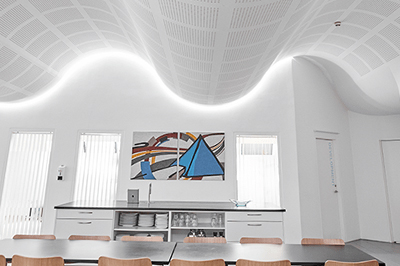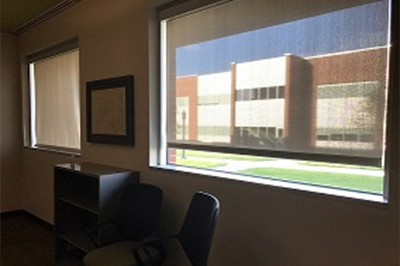Spacial Configuration
Spacial Configuration
Form/Shape of Room (A.f/SR)
From the supporting literature (linked above), irregular configurations considered as shapes and forms which all their sides and angles are not equal, and that affects the amount of noise/sound in the classroom. This inequality can take place in ceilings, walls, and floors.
Recommendations
1. Ensure that standards and regulations are enforced to optimize the performance of building envelope.
Glass and Window System (GWS) Dimension (GWS.D)
From the supporting literature (linked above), the total coverage of windows relative to the total wall area of the classroom influence the acoustic comfort of occupants. Having window sizes and dimensions that are not appropriate for the classroom affects indoor acoustic and students health.
Natural Light (NL)
From the supporting literature (linked above, daylight improves students behavior, achievement, and performance. Maximizing the use of natural light reduces heat gain, and increases savings by reducing energy demand, operation, and maintenance cost. Natural light guarantees improved health, productivity, safety, reduces stress and energy cost. Daylight also makes buildings sustainable and enhance their aesthetic view.
Recommendations
1. Promote the design of classrooms and buildings that maximize natural lighting.
2. The design of classrooms and choice of lighting system should be centered on the occupants, to reflect their psychological and physiological well-being.
3. Consider the age, height, and weight of students in determining the amount of light and color that is appropriate for them.
References
1. Barrett, P. et al. (2013) A holistic, multi-level analysis identifying the impact of classroom design on pupils’ learning. Building and Environment, 59, 678-689.2. Barrett, P. et al. (2015) The impact of classroom design on pupils’ learning: Final results of a holistic, multi-level analysis. Building and Environment, 89, 118-133.
3. Blackmore, J. et al. (2011) Research into the connection between built learning spaces and student outcomes Literature review. Department of Education and Early Childhood Development, State of Victoria.
4. Brown, Z.B. (2009). Occupant Comfort and Engagement in Green Buildings: Examining the Effects of Knowledge, Feedback and Workplace Culture. The University of British Columbia, Vancouver, BC.
5. Duyar, I. (2010). Relationship Between School Facility Conditions and the Delivery of Instruction: Evidence From a National Survey of School Principals. Facilities Management, 8(1), 8-25.
6. Earthman, G.I. (2002) School Facility Conditions and Student Academic Achievement. UCLA’s Institute for Democracy, Education, & Access Williams Watch Series: Investigating the Claims of Williams v. State of California (University of California, Los Angeles).
7. Earthman, G.I. (2004). Prioritization of 31 Criteria for School Building Adequacy. American Civil Liberties Union Foundation of Maryland. Retrieved in 2016 from http://www.schoolfunding.info/policy/facilities/ACLUfacilities_report1-04.pdf, Baltimore, MD.
8. Frankfurt Short Bruza (FSB). (2017). Oklahoma Healthy School Best Practices. University of Oklahoma, Norman, Ok.
9. Fukuchi, T., & Ueno, K. (2004) Guidelines on acoustic treatments for school buildings proposed by the Architectural Institute of Japan. Paper presented at the ICA- international conference on acoustic, Kyoto, Japan. Guideline retrieved from https://www.researchgate.net/profile/Kanako_Ueno/publication/268345588 Guidelines on acoustic treatments for school buildings proposed by the Architectural Institute of Japan/links/5508d0f30cf27e990e0cf6c8.pdf
10. McGuffey, Carroll W. (1982). “Facilities,” Chapter 10, Herbert Walberg (ed.) “Improving educational standards and productivity” Berkley: McCutchan Publishing Corp.
11. Oral, G.K., Yene, A.K. Bayazit, N.T. (2004) Building envelope design with the objective to ensure thermal, visual and acoustic comfort conditions. Building and Environment, 39(3), 281–287.
12. Uline, C., Tschannen‐Moran, M. (2008) The walls speak: the interplay of quality facilities, school climate, and student achievement. Educational Administration, 46(1), 55-73.







